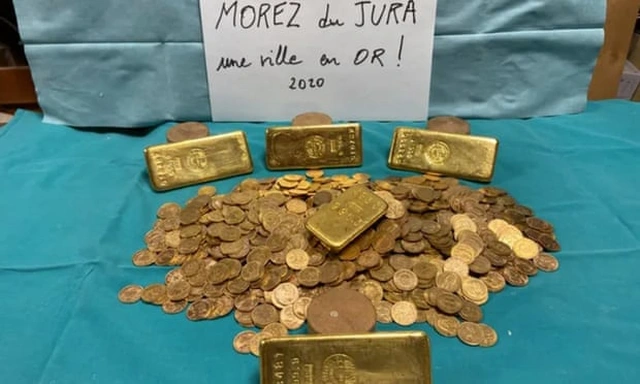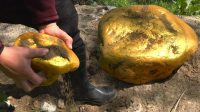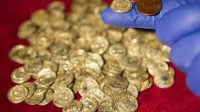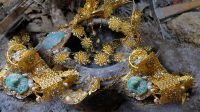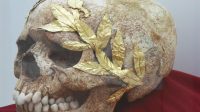Incredible Beginner’s Luck: Ole Ginnerup Schytz, a novice treasure hunter, had only been exploring with his new metal detector for a few hours when he stumbled upon an astonishing discovery. Buried beneath the surface in a field near the town of Jelling in southwestern Denmark, he unearthed a remarkable collection of 1,500 gold artifacts dating back five centuries to the Iron Age. This impressive find, made in December of last year, is now regarded by experts as one of the most significant and expansive discoveries in the history of Denmark. It’s a true triumph for a newcomer in the field.
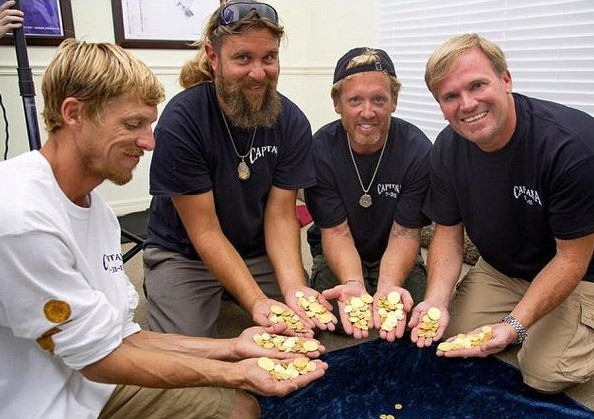
Schytz remembers hearing the device turn on, then moving dirt to reveal a small, twisted piece of metal.

To the surprise of the amateur metal detectorist, the initial discovery turned out to be the first of an impressive collection of 22 exquisite gold ornaments from the sixth century. Together, these captivating pieces of jewelry weigh just over two pounds, adding to their allure and historical significance.
Speaking with TV Syd, as quoted by Felix Allen of the Sun, Schytz describes the find as “the epitome of pure luck.”
He adds, “Denmark covers an area of 16,621 square miles, and yet I happened to choose the exact spot where this discovery was made.”

Months after Schytz’s chance discovery, the Vejlemuseerne in Jutland has finally reveaɩed the ancient treasures to the public.
According to a statement, the hauɩ consists primarily of bracteates—medallions that were popular in northern Europe during the Migration Period (roughly 300 to 700 C.E.). Women would have worn the pendants, which were often inscribed with magicaɩ symbols or runes, for protection.
Many of the symbols seen on the newly unearthed bracteates are unfamiliar to experts, Mads Ravn, director of research at the Vejle museums, tells Agence France-Presse (AFP). Interpreting them will help shed light on the little-understood societies that inhabited the region prior to the Vikings.
One of the medallions depicts the Norse god Odin and appears to be based on similar Roman jewelry that celebrated emperors as gods, reports TV Syd.

Many of the symbols seen on the bracteates are unfamiliar to researchers. Konserveringscenter Vejle / Vejlemuseerne
Artifacts discovered in the cache include gold coins from the Roman Empire that were repurposed into jewelry. One of the coins features Constantine the Great, who ruled from 306 to 337 C.E. This suggests that Jelling, known as a cradle of Viking civilization between the 8th and 12th centuries, was a hub of power with trade connections spanning the European continent, according to a report in Artnet News.
The objects’ immacuɩate craftsmanship points to their original owner’s probable high status.
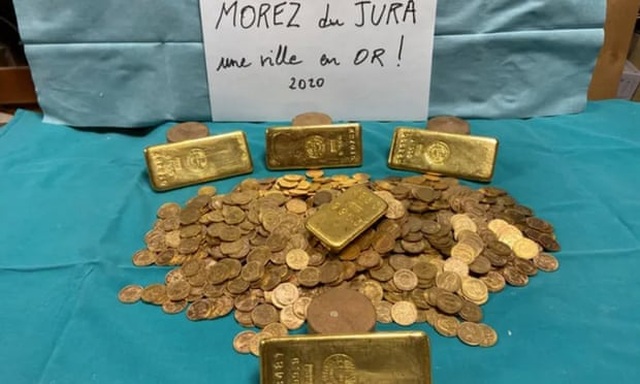
When experts excavated the site where Schytz found the hoard, they discovered the ruins of a village longhouse. Without the amateur treasure hunter’s discovery, “there was nothing that could [have made] us predict that an unprecedented warlord or great man lived here, long before the kingdom of Denmark arose in the following centuries,” Ravn adds.
Archaeologists posit that the gold was buried to protect it from invaders, or as a last-ditch offering to the gods. The find is dated to around 536, when a volcanic eruption in Iceland covered the sky in ash and caused widespread famine in Scandinavia. Other gold troves found in the region, including a group of 32 artifacts unearthed on the island of Hjarnø, have been dated to around this same time.

